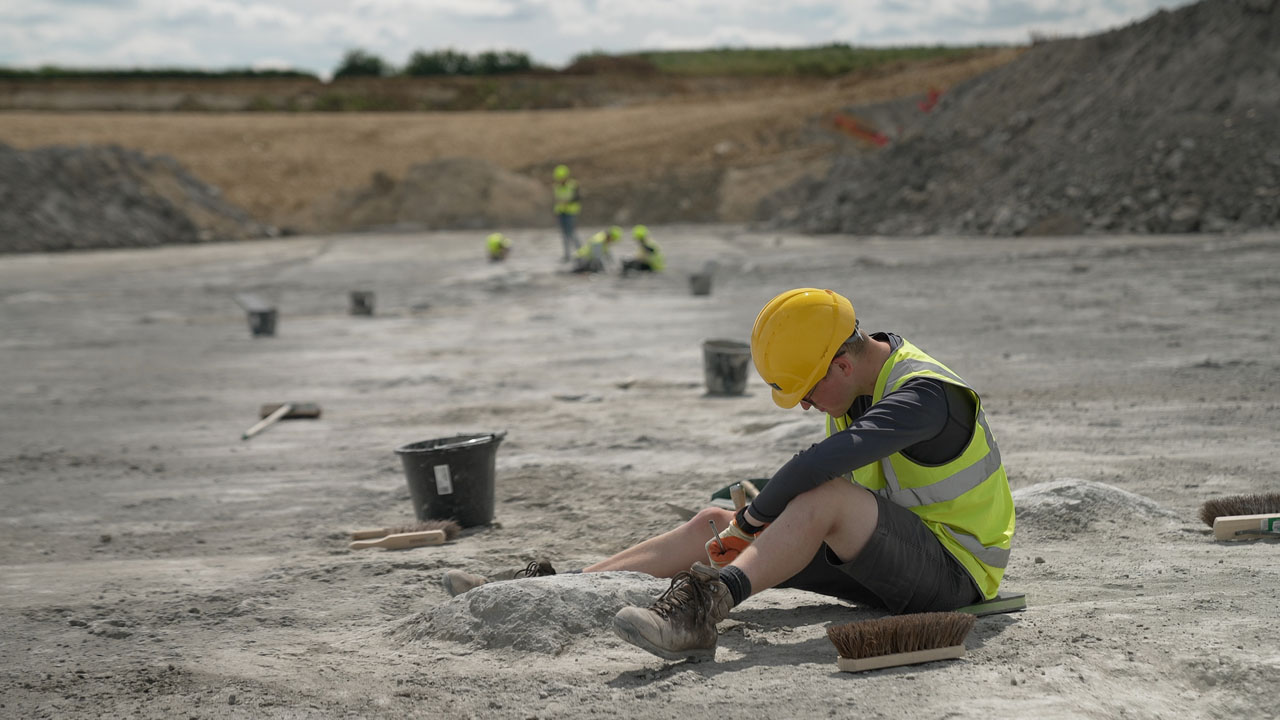The tracks are an incredible resource for researchers, and they provide very different information from fossils.
“We might have a skeleton, where we say the leg is this long, so its stride must be this long,” says Peter Falkingham from Liverpool John Moores University.
“But with a trackway like this, we’ve got hundreds of metres of the animal doing its own thing. And it’s so important to look at the way animals move freely and naturally, and tracks are the only way we can do that for dinosaurs.”
The footprints can answer questions about how dinosaurs interacted – were they alone or in a herd, being chased, or simply ambling along?
Since the arrival of computer-generated dinosaurs in movies like Jurassic Park, the behaviour you see on screen is based largely on the discoveries made at this kind of site.
By analysing the footprints in his lab, Prof Falkingham has recreated a 3D-model of the sauropod dinosaur that made the lengthy track.
“It’s not moving particularly fast, two metres per second,” he explains. “It’s about the same speed as a human would walk quickly – in this case it’s a stroll.”
And he’s been carefully studying a particular footprint – one that literally stands out from all others.

